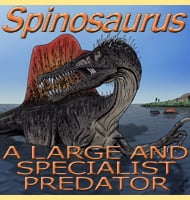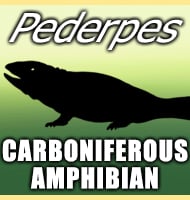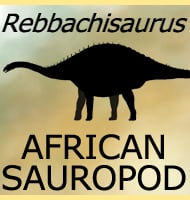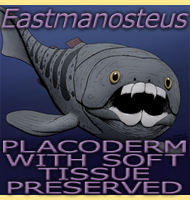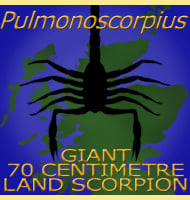In Depth
The describers of Guidraco classed it within the Pteranodontoidea (the group defined by the type genus Pteranodon), however they also found that its closest known relative was Ludodactylus which is actually a member of the Ornithocheiridae (another group defined by the type genus Ornithocheirus). These two groups of pterosaurs are closely related to one another, although the exact relationship of these groups can vary depending upon the author.
The main context here however is the similarity to Ludodactylus, a pterosaur that at the time of description is only known from South America, specifically Brazil. This similarity if not a case of convergent evolution is taken as being evidence of a faunal interchange between the continents during the early Cretaceous. It should be remembered that the continents were in a quite different arrangement to what they are today with what is now the Atlantic Ocean being much narrower. As flying reptiles, pterosaurs (particularly piscivorous ones) could easily follow coastlines to reach into new continents.
Guidraco is thought to have been a piscivore (an eater of fish) because of the arrangement of the anterior (forward) teeth that are both elongated and angled to point forwards rather than just up and down. This arrangement creates a large catch area of needle like teeth that significantly increases the chance of this pterosaur to catch and hold onto slippery prey like fish. These anterior teeth also have vertical ridges on the back while the teeth at the rear of the mouth are smooth.
Guidraco also has a crest that rises up from the back of the skull similar to world famous Pteranodon, but it lacks the semi-circular ‘keel crests’ on the tips of the jaws that are present in other ornithocheirid genera such as Ornithocheirus. Instead the closest match is to the aforementioned Ludodactylus which seems to have had a similar head crest to Guidraco while also lacking the keel crests. Although pterosaur crests have often been described as flying aids for such things as steering, the incredible variety amongst different genera is more indicative of the crests being used for display purposes. This could not only be for the purpose of attracting a mate, but for recognising others of their own kinds during a time when the skies would have been full of multiple kinds of pterosaurs.
The name Guidraco is a combination of the Chinese ‘Gui’ which means ‘malicious ghost’ with the latin ‘draco’ which means ‘dragon’. The species name ‘venator’ means ‘hunter’ and combines with the genus name to make Guidraco venator which means ‘ghost dragon hunter’. Guidraco is merely one of many pterosaur genera that are known from the Jiufotang Formation of China. Below is a list of some of the pterosaurs that have been recovered from this Formation. For more information about pterosaurs check out ‘Pterosaurs, an Overview’ and ‘Top 10 standout pterosaurs’.
Further Reading
Further reading- New toothed reptile from Asia: close similarities between early Cretaceous pterosaur faunas from China and Brazil. – Naturwissenschaften 99:249-257. – X. Wang, A. W. A. Kellner, S. Jiang & X. Cheng – 2012.

